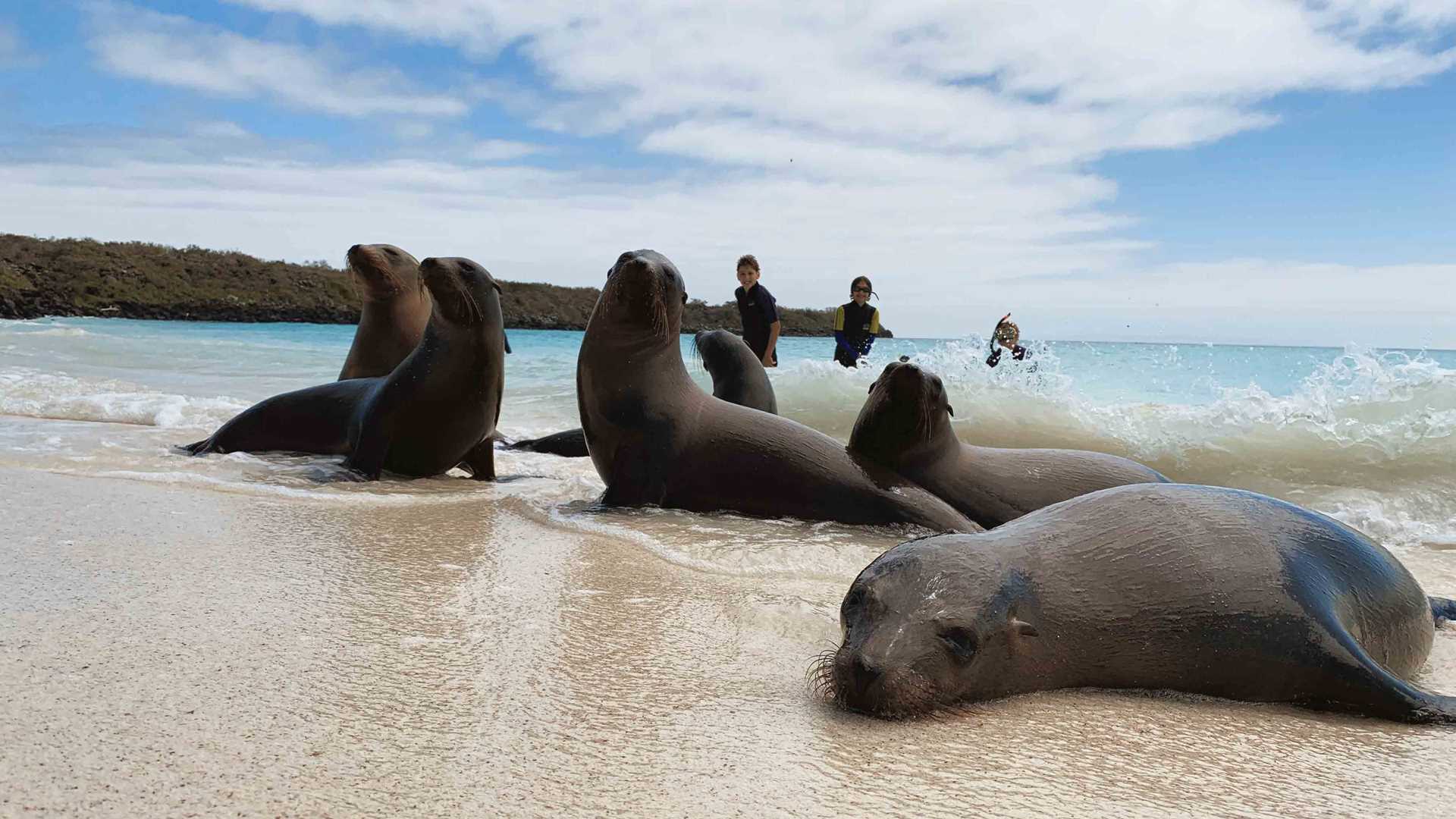Located in the southeast portion of the Galapagos, Espanola is considered the oldest island in the archipelago. It has no active volcanoes or freshwater but houses exuberant fauna. Early in the morning, with a calm sea and a cool breeze we set for our day of exploration. We kayaked along the shore of Espanola Island and enjoyed the incredible landscape this location has to offer. Sea turtles were everywhere, and the ocean was so clear that it was possible to observe them resting on the ocean floor like floating rocks. Blue-footed boobies and frigatebirds flew overhead looking for fish, taking full advantage of the ocean conditions. After breakfast the sun appeared to warm up the waters – right on time for our next snorkeling activity. As soon we got into the water, more than 15 juvenile Galapagos sea lions approached, giving us an “official welcome” to Gardner Bay. They were our curious companions during the entire snorkeling session. It was amazing to play with them, making bubbles, swimming further down, or imitating their movements. Some sea lions advanced quickly to then jump over our heads! It was a great experience for everyone. Afterward we headed to the white beach of Gardner Bay where we observed mockingbirds and their fearless interaction with our guests. We also saw lava lizards walking on the sea lions’ bodies, trying to catch insects to feed on. All the while, the top predator of the archipelago, the Galapagos hawk flew close to the nearby rocks looking for marine iguana.
After lunch National Geographic Islander was repositioned to Punta Suarez, home to the largest seabird of the archipelago, the waved albatross. We landed on a small dock heading inland and explored a forest of palo santo trees, deciduous bushes and some pioneer plants. The flora was spectacular, but so was the fauna. The wildlife of Punta Suarez is considered the oldest geologically speaking. Along the shore, dozens of marine iguanas warmed their bodies in the afternoon sun, crabs could be seen cleaning their molten skin, and on the bushes behind, warbler finches tried to catch flies. Walking along the cliffs we arrived at a Nazca and blue-footed booby nesting ground and observed many of them displaying their attractive courtship dance. Hiking inland, we arrived at a waved albatross’ nesting area, and saw many couples incubating their eggs, flying, or performing an elaborate courtship dance before mating. Perhaps the most incredible part of everything here are its inhabitants. Their curiosity and unique behavior will be with us forever.
We returned to National Geographic Islander and watched the sun disappear from the horizon, coloring the sky and ocean with a golden hue. We take with us the best memories of a beautiful day.







